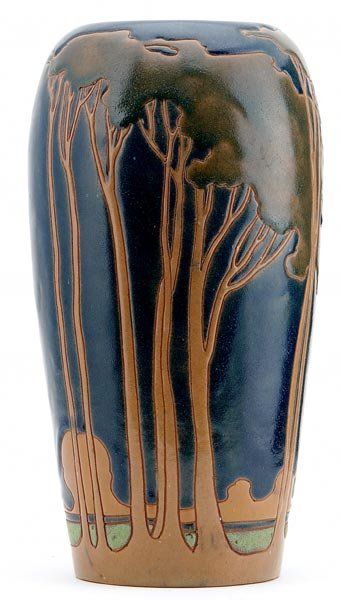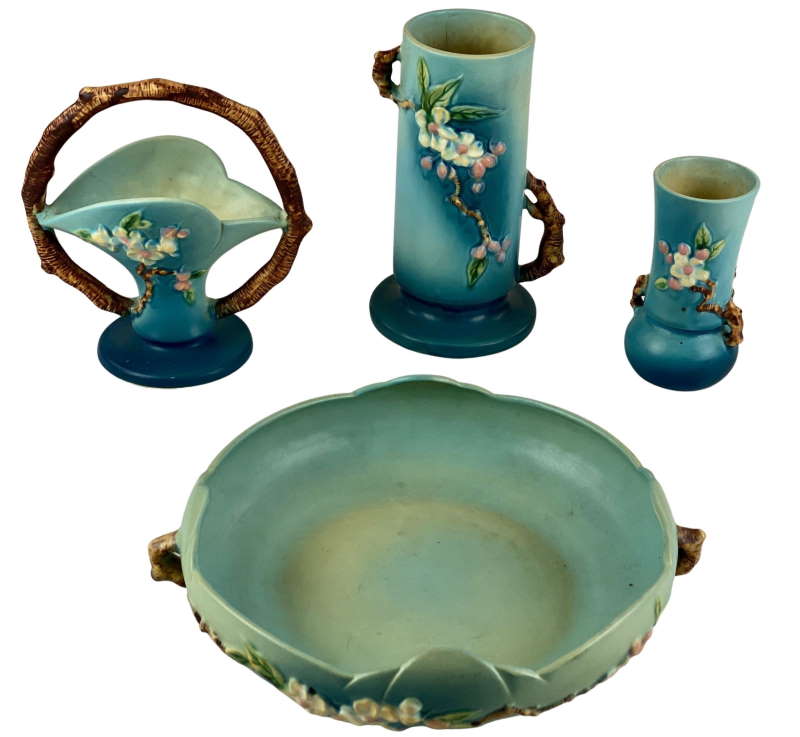Roseville Pottery Company was a significant contributor to the American pottery industry in the 19th and 20th centuries. The company was established in 1890 in Roseville, Ohio, by J.F. Weaver, primarily manufacturing simple household pieces. However, in 1898, under the direction of George Young, who had previously worked as a salesman for the company, Roseville Pottery began to produce art pottery pieces inspired by nature that were widely popular among the American Arts and Crafts movement. We take a look at a brief history of the pottery along with some classic pieces and their realized auction prices, as well as the world record price for a vase by Frederick Hurten Rhead.

The company acquired Midland Pottery in 1895, and in 1896, George Young gained controlling interest in the Roseville Pottery. In 1898, they acquired the Clark Stoneware Company in Zanesville and moved the headquarters there, owning and operating four plants and employing 325 people by 1901. The company continued to expand, and in 1900, it introduced its first art pottery line, Rozane, designed by Ross C. Purdy to compete with other art pottery lines from Rookwood Pottery, Owens Pottery, and Weller Pottery.

Roseville Pottery continued to flourish under the artistic direction of Frederick Hurten Rhead, who joined the company as an art director in 1904. Rhead is associated with creating the Della Robbia line, and one of his vases holds the record as the most expensive piece of American art pottery. His brother, Harry Rhead, stayed on at Weller.

Frank Ferrell became the art director for Roseville in 1917, and his designs, including the popular Blackberry, Sunflower, and Pinecone patterns, contributed significantly to the company’s success. However, following World War II, the rise of synthetic materials like melamine resin in dinnerware caused a decline in the pottery industry. Roseville Pottery produced its final designs in 1953, and in the following year, their facilities were purchased by the Mosaic Tile Company.

Since the company’s closure, Roseville Pottery has seen two distinct revivals: one with baby boomers in the 1970s and another in the late 1990s and early 2000s during the Mission Style revival. Today, Roseville pottery pieces are highly sought after by collectors and enthusiasts, and rare pieces can fetch hundreds or even thousands of dollars.

Roseville’s innovative designs inspired by nature, high-quality materials, and skilled craftsmanship remain some of the company’s most significant features. Popular Roseville patterns include Apple Blossom, Pine Cone, Water Lily, Sunflower, and Blackberry, among others. However, because of the company’s influence, replicas and counterfeits are common, and identifying genuine pieces can be confusing for collectors due to the wide variety of kiln markings or the lack thereof. In conclusion, the Roseville Pottery Company is a significant part of American pottery history, and its unique designs and quality craftsmanship continue to fascinate and captivate collectors worldwide.
Related
An Overview of American Pottery Companies, Dates, and Discoveries That Shaped a Nation’s Art





